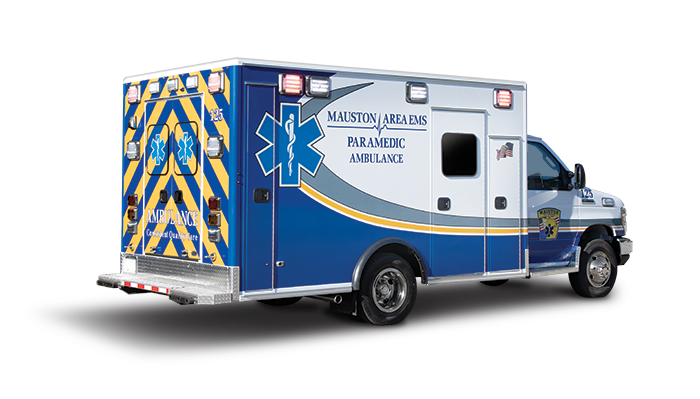

Charity ambulance – A special type of patient transport ambulance is provided by a charity for the purpose of taking sick children or adults on trips or vacations away from hospitals, hospices, or care homes where they are in long-term care.Ambulance bus – A large ambulance, usually based upon a bus chassis, that can evacuate and transport a large number of patients.These can be vans, buses, or other vehicles. Patient transport ambulance – A vehicle, which has the job of transporting patients to, from or between places of medical treatment, such as hospital or dialysis center, for non-urgent care.These can be road-going vans, boats, helicopters, fixed-wing aircraft (known as air ambulances), or even converted vehicles such as golf carts. Emergency ambulance – The most common type of ambulance, which provides care to patients with an acute illness or injury.In some cases, ambulances may fulfill more than one function (such as combining emergency ambulance care with patient transport: Advances in technology throughout the 19th and 20th centuries led to the modern self-powered ambulances.Īmbulances can be grouped into types depending on whether or not they transport patients, and under what conditions. Ambulances were first used for emergency transport in 1487 by the Spanish, and civilian variants were put into operation during the 1830s. The history of the ambulance begins in ancient times, with the use of carts to transport incurable patients by force. Field hospitals were still called ambulances during the Franco-Prussian War of 1870 and in the Serbo-Turkish war of 1876 even though the wagons were first referred to as ambulances about 1854 during the Crimean War. During the American Civil War vehicles for conveying the wounded off the field of battle were called ambulance wagons. Ambulances (Ambulancias in Spanish) were first used for emergency transport in 1487 by the Spanish forces during the siege of Málaga by the Catholic Monarchs against the Emirate of Granada. The word originally meant a moving hospital, which follows an army in its movements. The term ambulance comes from the Latin word " ambulare" as meaning "to walk or move about" which is a reference to early medical care where patients were moved by lifting or wheeling. These are known by names such as nontransporting EMS vehicles, fly-cars or response vehicles. Conversely, EMS agencies may also have emergency response vehicles that cannot transport patients. These vehicles are not usually (although there are exceptions) equipped with life-support equipment, and are usually crewed by staff with fewer qualifications than the crew of emergency ambulances. However, it varies by jurisdiction as to whether a non-emergency patient transport vehicle (also called an ambulette) is counted as an ambulance. Generally, vehicles count as an ambulance if they can transport patients. Others take the form of motorcycles, buses, limousines, aircraft and boats. Most ambulances use a design based on vans or pickup trucks.

They can rapidly transport paramedics and other first responders to the scene, carry equipment for administering emergency care and transport patients to hospital or other definitive care. For this purpose, they are generally equipped with flashing warning lights and sirens. Typically, out-of-hospital medical care is provided to the patient.Īmbulances are used to respond to medical emergencies by emergency medical services (EMS). Queen Elizabeth II (then Princess) next to British Army ambulance in 1945Īn ambulance is a medically equipped vehicle which transports patients to treatment facilities, such as hospitals.


 0 kommentar(er)
0 kommentar(er)
